¿Desea trasladar un sitio web de WordPress a un servidor local en su ordenador?
Instalar WordPress en su ordenador (servidor local) le permite aprender WordPress fácilmente y probar cosas. Al mover un sitio de WordPress en vivo a un servidor local, que le permite experimentar con los mismos datos que su sitio en vivo.
En este artículo, le mostraremos cómo mover fácilmente un sitio WordPress activo a un servidor local sin romper nada.
¿Por qué y quién querría mover un sitio WordPress a un servidor local?
Si ha estado ejecutando un sitio web WordPress durante algún tiempo, es posible que desee probar nuevos temas o un plugin. Sin embargo, hacer esto en un sitio web en vivo puede resultar en una mala experiencia de usuario para sus usuarios.
Para evitar esto, muchos usuarios crean una copia de su sitio web de WordPress en un servidor local para probar nuevos temas, plugins, o hacer pruebas de desarrollo.
Esto le permite establecer su tema con todo su contenido y probar todas las características sin preocuparse de romper su sitio. Muchos usuarios copian su sitio en un servidor local para practicar sus conocimientos de WordPress y de código con los datos reales del sitio.
Aunque puedes hacer todas las pruebas con contenido ficticio en WordPress, los datos del sitio real te dan una mejor representación visual de cómo aparecerán estos cambios en tu sitio en vivo.
Preparativos para trasladar un sitio local a un servidor local
En primer lugar, debe asegurarse de realizar siempre una copia de seguridad de su sitio web WordPress. Hay varios plugins de copia de seguridad de WordPress que puede utilizar.
En segundo lugar, necesitas instalar un entorno de servidor local en tu ordenador. Puedes usar WAMP para Windows y MAMP para Mac. Una vez que hayas establecido el entorno, necesitas crear una nueva base de datos usando phpMyAdmin.
Simplemente visite la siguiente URL en su navegador para iniciar phpMyAdmin.
http://localhost/phpmyadmin/
http://localhost:8080/phpmyadmin/
Desde aquí tienes que hacer clic en la pestaña ‘Bases de datos’ y crear una nueva base de datos. Necesitarás esta base de datos para descomprimir los datos de tu sitio.
Ahora está listo para mover su sitio WordPress al servidor local.
Método 1. Trasladar un sitio WordPress activo a un servidor local usando plugin
Este método es más fácil y recomendado para todos los usuarios.
Lo primero que debe hacer es instalar y activar el plugin Duplicator. Para más detalles, consulte nuestra guía paso a paso sobre cómo instalar un plugin de WordPress.
Duplicator le permite crear fácilmente un paquete duplicado de todo su sitio web. Se puede utilizar para mover su sitio de WordPress a una nueva ubicación, y también se puede utilizar como una copia de seguridad plugin.
Al activarlo, el plugin añade un nuevo elemento / artículo de menú “Duplicator” en la barra lateral del administrador de WordPress. Al hacer clic en él, accederá a la pantalla de paquetes del plugin.
Para crear un nuevo paquete, debe hacer clic en el botón crear nuevo paquete. Duplicator iniciará el asistente de paquetes, y deberá hacer clic en el botón Siguiente para continuar.
El plugin analizará su sitio web y realizará algunas comprobaciones en segundo plano. A continuación, le mostrará un resumen de esas comprobaciones. Si todo parece correcto, haz clic en el botón “Crear” para continuar.
Duplicator creará el paquete de su sitio web.
Una vez terminado, verá un archivo zip que contiene todos los datos de su sitio web, y un archivo de instalación. Debe descargar ambos archivos en su ordenador.
Ahora está listo para descomprimir e instalar estos archivos en su servidor local.
En primer lugar, debe crear una nueva carpeta en la carpeta raíz de su servidor local. Esta es la carpeta donde su servidor local almacena todos los sitios web.
Por ejemplo, si estás usando MAMP, entonces será la carpeta /Applications/MAMP/htdocs/. Alternativamente, si está utilizando WAMP, entonces sería la carpeta C:\wamp\www\.
Dentro de esta carpeta, puede crear nuevas carpetas para cada nuevo sitio web que desee importar o crear en su servidor local.
A continuación, abra la carpeta que ha creado para su sitio web local y copie y pegue tanto el archivo zip como el script de instalación que ha descargado anteriormente.
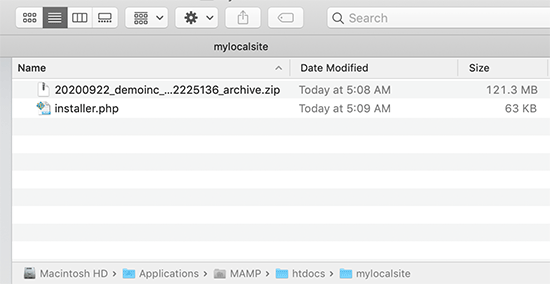
Para ejecutar la instalación, debe abrir el script installer.php en su navegador / explorador web.
Por ejemplo, si ha pegado ambos archivos en la carpeta /mylocalsite/, podrá acceder a ellos desde su navegador visitando http://localhost/mylocalsite/installer.php.
Ahora verá el script de instalación de Duplicator así:
Haga clic en el botón Siguiente para continuar.
Duplicator descomprimirá el archivo zip y le pedirá que introduzca la información de la base de datos de su sitio local. Esta es la base de datos que creó anteriormente.
El nombre del servidor es casi siempre localhost y el nombre de usuario es root. En la mayoría de los casos, la instalación de su servidor local no establece una contraseña para root, por lo que puede dejarla en blanco.
En la parte inferior de la página, verás un botón “Probar base de datos” que puedes utilizar para asegurarte de que la información de tu base de datos es correcta.
Si todo parece correcto, haz clic en el botón “Siguiente” para continuar.
Duplicator importará su base de datos de WordPress. Después, te pedirá que vuelvas a comprobar la información del nuevo sitio web que ha detectado automáticamente.
Haga clic en el botón Siguiente para continuar.
Duplicator finalizará la configuración y le mostrará un botón para acceder a su sitio local. Utilizará el mismo nombre de usuario y contraseña de WordPress que utiliza en su sitio activo.
Eso es todo, usted ha movido correctamente su sitio en vivo al servidor local.
Método 2. Mover manualmente un sitio WordPress activo a un servidor local
En caso de que el plugin no funcione para usted, siempre puede mover manualmente su sitio en vivo a un servidor local. Lo primero que debe hacer es una copia de seguridad manual de su sitio web desde su cuenta de alojamiento WordPress.
Paso 1. Exporte la base de datos de WordPress de su sitio activo
Para exportar la base de datos de WordPress de su sitio, debe acceder a su escritorio de cPanel y hacer clic en phpMyAdmin.
Nota: Estamos mostrando capturas de pantalla del Escritorio de Bluehost.
Dentro de phpMyAdmin, es necesario seleccionar la base de datos que desea exportar y luego haga clic en la pestaña de exportación en la parte superior.
phpMyAdmin le pedirá que elija un método de exportación rápido o personalizado. Recomendamos utilizar el método personalizado y elegir zip como método de compresión.
A veces los plugins de WordPress pueden crear sus propias tablas dentro de su base de datos de WordPress. Si ya no está usando ese plugin, entonces el método personalizado le permite excluir esas tablas.
Deje el resto de las opciones como están y haga clic en el botón Ir para descargar la copia de seguridad de su base de datos en formato zip.
PhpMyAdmin descargará su archivo de base de datos. Para más detalles, vea nuestro tutorial sobre cómo hacer una copia de seguridad de su base de datos de WordPress manualmente.
Paso 2. Descargar todos los archivos de WordPress Descargue todos sus archivos de WordPress
El siguiente paso es descargar los archivos de WordPress. Para ello, debe conectarse a su sitio de WordPress mediante un cliente FTP.
Una vez conectado, seleccione todos los archivos de WordPress y descárguelos en su ordenador.
Paso 3. Importe sus archivos de WordPress y la base de datos al servidor local
Después de descargar sus archivos de WordPress, necesita crear una carpeta en su servidor local donde desea importar el sitio local.
Si usted está usando WAMP entonces usted querrá crear una carpeta dentro de la carpeta C:\wamp\www\ para su sitio local. Los usuarios de MAMP tendrían que crear una carpeta en /Applications/MAMP/htdocs/ carpeta.
Después de eso, simplemente copie y pegue sus archivos de WordPress en la nueva carpeta.
Lo siguiente es importar la base de datos de WordPress. Simplemente abra phpMyAdmin en su servidor local visitando la siguiente URL:
http://localhost/phpmyadmin/
Como ya ha creado la base de datos anteriormente, ahora tiene que seleccionarla y, a continuación, hacer clic en la pestaña Importar de la parte superior.
Haga clic en el botón “Seleccionar archivo” para seleccionar y subir el archivo de exportación de la base de datos que descargó en el primer paso. A continuación, haga clic en el botón “Ir” situado en la parte inferior de la página.
PhpMyAdmin descomprimirá e importará tu base de datos de WordPress.
Ahora que su base de datos está establecida, necesita actualizar las URLs dentro de su base de datos de WordPress que hacen referencia a su sitio.
Para ello, ejecute una consulta SQL en phpMyAdmin. Asegúrese de haber seleccionado la base de datos de su sitio local y luego haga clic en SQL.
En la pantalla SQL de phpMyAdmin copie y pegue este código, asegúrese de sustituir example.com por la URL de su sitio y http://localhost/mylocalsite por la URL del servidor local de su sitio.
UPDATE wp_options SET option_value = replace(option_value, 'https://www.example.com', 'http://localhost/mylocalsite') WHERE option_name = 'home' OR option_name = 'siteurl'; UPDATE wp_posts SET post_content = replace(post_content, 'https://www.example.com', 'http://localhost/mylocalsite'); UPDATE wp_postmeta SET meta_value = replace(meta_value,'https://www.example.com','http://localhost/mylocalsite');
Esta consulta reemplazará las referencias a la URL de su sitio desde la base de datos y la reemplazará con la URL del servidor local.
Paso 4. Actualice el archivo wp-config.phpActualización del archivo wp-config.php
El último paso es actualizar el archivo wp-config.php de su sitio local. Este archivo contiene ajustes de WordPress, incluyendo cómo conectarse a su base de datos de WordPress.
Simplemente vaya a la carpeta donde instaló WordPress en su servidor local y abra el archivo wp-config.php en un editor de texto como el Bloc de notas.
Sustituya el nombre de la base de datos por el que creó en phpMyAdmin en su host local.
Después de eso, reemplace el nombre de usuario de la base de datos con su nombre de usuario MySQL local, por lo general es la raíz. Si ha establecido una contraseña para el usuario root de MySQL en su host local, introdúzcala. De lo contrario, déjelo vacío y guarde los cambios.
/** The name of the database for WordPress */
define('DB_NAME', 'database_name_here');
/** MySQL database username */
define('DB_USER', 'username_here');
/** MySQL database password */
define('DB_PASSWORD', 'password_here');
Ahora puede visitar su sitio local en una ventana del navegador introduciendo la URL así:
http://localhost/mylocalsite/
Sustituya ‘mylocalsite’ por el nombre de la carpeta donde ha copiado los archivos de WordPress.
Eso es todo, su sitio de WordPress en vivo ya está copiado en su servidor local.
Esperamos que este artículo le haya ayudado a aprender cómo mover fácilmente un sitio WordPress activo a un servidor local. Puede que también quieras ver nuestra guía sobre cómo crear fácilmente un sitio de pruebas para WordPress, o cómo mover un sitio WordPress de un servidor local a un sitio activo.
Si te ha gustado este artículo, suscríbete a nuestro canal de YouTube para ver tutoriales en vídeo sobre WordPress. También puedes encontrarnos en Twitter y Facebook.

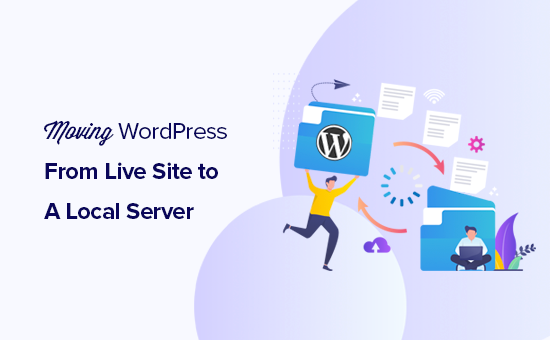
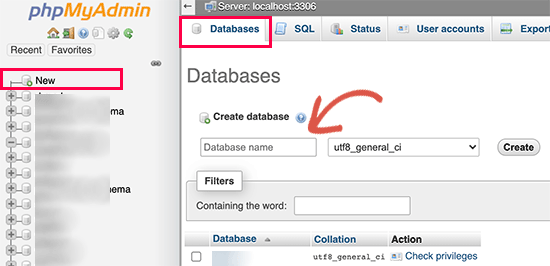
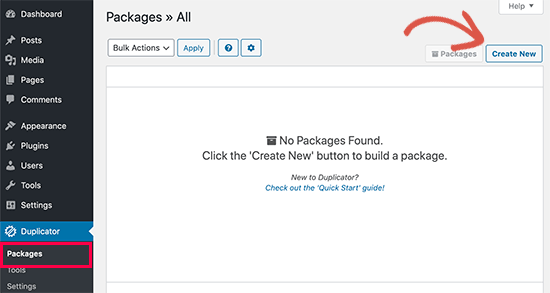
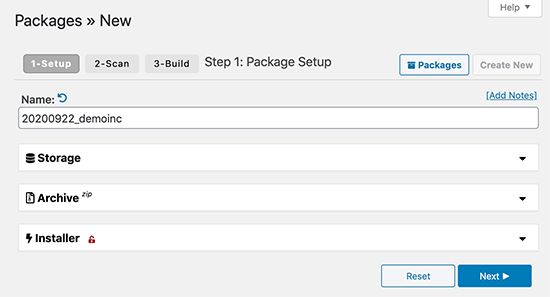
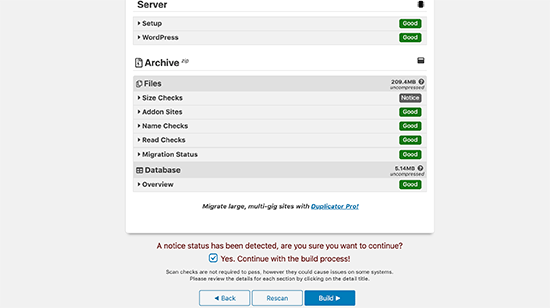
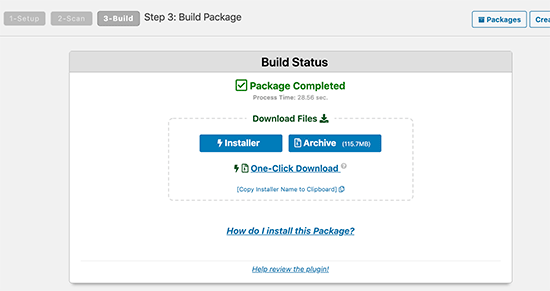
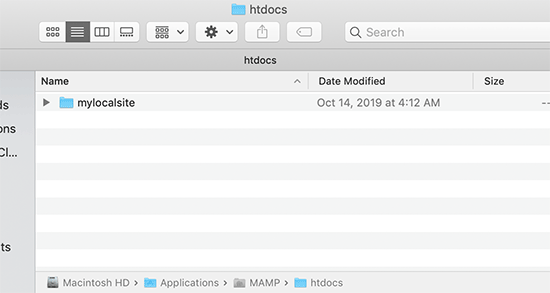
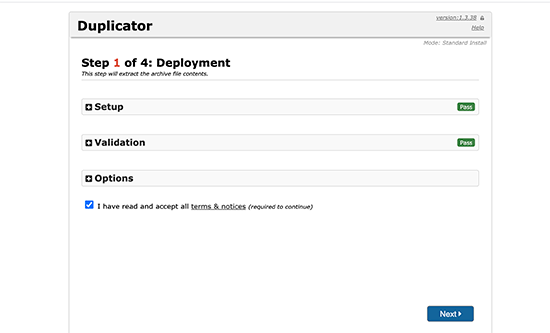
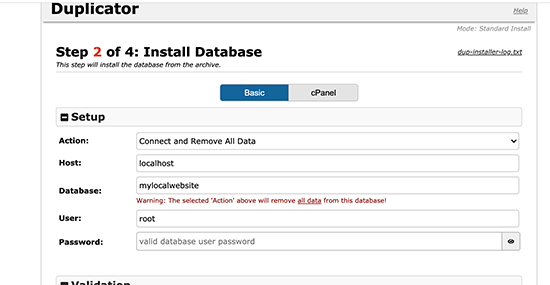
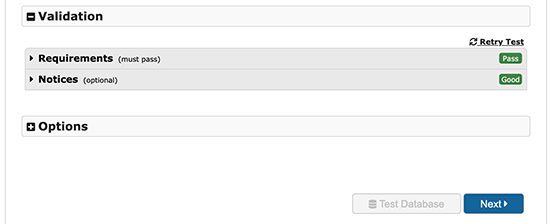
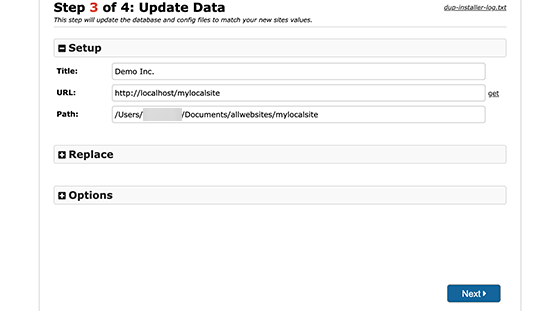
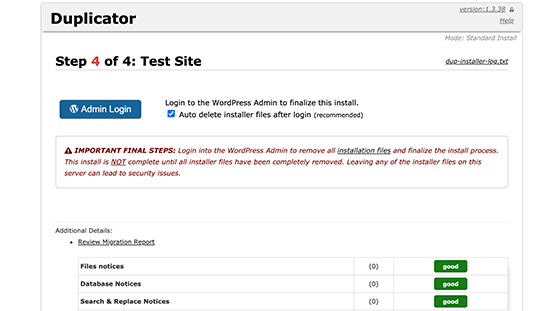
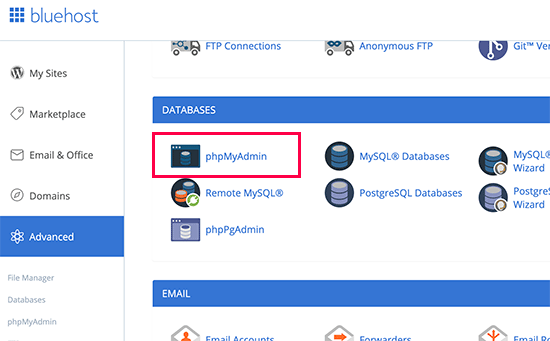
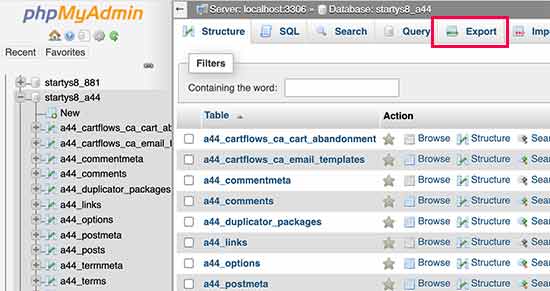
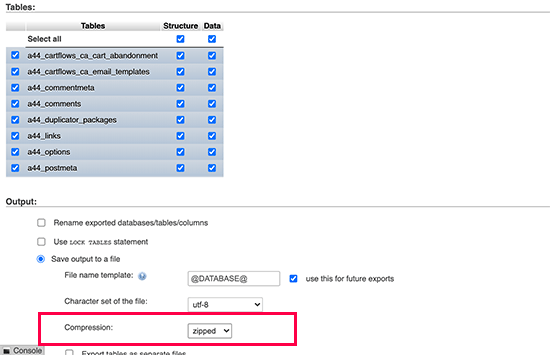
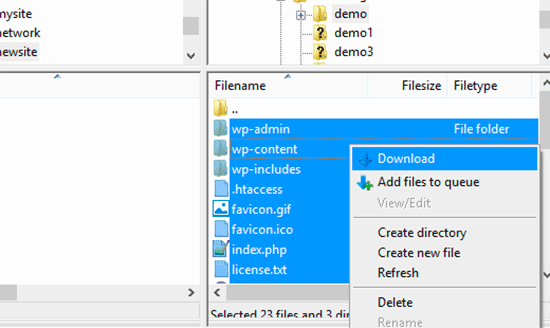
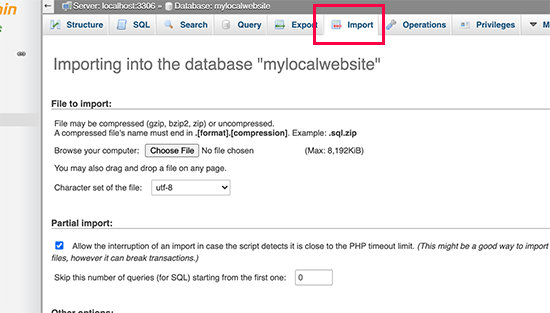
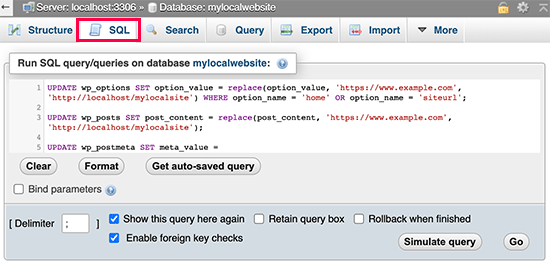




Syed Balkhi says
Hey WPBeginner readers,
Did you know you can win exciting prizes by commenting on WPBeginner?
Every month, our top blog commenters will win HUGE rewards, including premium WordPress plugin licenses and cash prizes.
You can get more details about the contest from here.
Start sharing your thoughts below to stand a chance to win!
Jakob Uzioa says
So i followed the instructions to manually move the site to the letter using wampserver but when i navigate to the file path localhost/mysite and hit enter, the site does not open but instead only a file downloads which is called. ” download” which is a php file:
/**
* Front to the WordPress application. This file doesn’t do anything, but loads
* wp-blog-header.php which does and tells WordPress to load the theme.
*
* @package WordPress
*/
/**
* Tells WordPress to load the WordPress theme and output it.
what could be the problem ?
WPBeginner Support says
Please ensure you go through the installer.php when first installing the site and ensure WAMP is running as common possible reasons for that issue.
Administrador
Tye says
Thanks for the tutorial, its more clear than a lot of the ones I found online, I have a problem though, migration all fine, the site is running but I cannot login with the usernames I had on the live site, cannot access the admin dashboard to create new usernames either. Help please?
WPBeginner Support says
If your users are not working then you could manually add a user following the steps in our article below. You would be able to use your file manager instead of FTP for a local installation.
https://www.wpbeginner.com/wp-tutorials/how-to-add-an-admin-user-in-wordpress-using-ftp/
Administrador
Mark says
Thank you for this tutorial, you run a very helpful website. It took me a long time to run through this, as there are alot of steps and I find a lot of ways to go wrong! I ended up using the file names that you used in your examples, to reduce complication. And success! Much appreciated.
WPBeginner Support says
Glad our guide could help!
Administrador
Lina says
Thanks for the great tutorial! However, it only works for my home page. When I try to open a subpage, I see this error message: “The requested URL was not found on this server.” Can you help me here?
Best regards,
Lina
WPBeginner Support says
It would depend on the method you used but we would recommend ensuring you used the SQL update as that should fix your URLs in your database. You may also want to ensure the links you are using in your menu are not custom URLs as that can be a common reason for that issue as well.
Administrador
Awais says
is the above code is right ?
I copy and paste in SQL but every time this massage comes,
0 rows affected. (Query took 0.0046 seconds.)
WPBeginner Support says
The code should work but especially if you’ve already run it once, there will be no change in your site and it will come back with 0 affected.
Administrador
Deb says
Hi, thanks for your fab instructions. I used the Duplicator method and everything works…except when viewing the site my images/thumbnails don’t show up (broken image), until I click on them. Then they show in their own window, as expected.
They do show properly in the wp dashboard editor.
Cheers, Deb
WPBeginner Support says
There are a few possible reasons but for a starting point you could try regenerating the thumbnails following our guide below as the most common solution for that error:
https://www.wpbeginner.com/plugins/regenerate-thumbnails-new-image-sizes-wordpress/
Administrador
Aamir Khan says
I have created a backup of my website manually and setup on local machine and run the above quires, but my website is redirecting to online version.
WPBeginner Support says
It seems like you may have not updated the URL, you can do so using step 3 of the manual method of this article.
Administrador
George says
Thank you so much for this clear and useful article. I was able to follow it and migrate my WP site in less than 20 minutes – and I’m no expert. You’ve saved me a lot of pain – thank you.
WPBeginner Support says
Glad our guide was helpful
Administrador
Barry says
Doesn’t work for me. I create the package, but it installs the basic WordPress files. So when I navigate to the folder it asks me to setup wordpress
WPBeginner Support says
For the most common reason, you would want to ensure you are properly connected to the database, if you are not then it would show the option for creating a new site instead of showing the correct site.
Administrador
Daniel says
Nooo, its not working for me. pefrectly written tutorial and easy to follow (apart from it says hhttpps in the 3rd query)
i get this in my browser:
This site can’t be reachedlocalhost refused to connect.
Try:
Checking the connection
Checking the proxy and the firewall
ERR_CONNECTION_REFUSED
WPBeginner Support says
Thanks for pointing out that typo, it should be fixed. For that error, you would want to ensure you updated your URL in step 3 correctly for the most common reason for that issue.
Administrador
McKenzie says
Thanks for your tutorial.
The front page is partially working but every other page is not working at all. Furthermore, it seems that front page is loading All the pages. What could be wrong?
WPBeginner Support says
We would recommend starting by going through our troubleshooting guide below:
https://www.wpbeginner.com/beginners-guide/beginners-guide-to-troubleshooting-wordpress-errors-step-by-step/
Administrador
Collins says
Hi, Thank you for this super useful article.
I don’t know why mine doesn’t just work, I have done the exact same thing and gotten all the correct feedback. Whenever I try to open the home page localhost/site/ I get a page that doesn’t exist with the headers and footers and the rest of the pages still point to the live site.
WPBeginner Support says
It sounds like you may have not set the URLs correctly. You would likely want to go to method 2 and try the SQL changes to update your URLs.
Administrador
Murat says
For those who are getting “wp_options doesn’t exist” error, you may have changed your table_prefix before. Just open the wp_config.php file and check $table_prefix = ‘wp_’
if the value isn’t “wp_” you get that error so when pasting the code edit it accordingly, for instance:
UPDATE xx_options SET option_value………..
WPBeginner Support says
Thanks for sharing this should someone be running into that error
Administrador
Chinwe says
Thank you so much for this. It worked.
WPBeginner Support says
Glad our guide was helpful
Administrador
Ivana Spasic says
When I copy and paste the code you provided to phpMyAdmin’s SQL screen, I am getting message: #1146 – Table ‘xyz.wp_options’ doesn’t exist.
How can this be fixed?
WPBeginner Support says
You would want to ensure you have the correct database selected for the most common reason for that issue.
Administrador
Jill says
I used the Duplicator plugin to set up a copy of a website for a non-profit that I inherited. After reloading it so that all plugins are disabled I finally came to the conclusion that my site is attempting to use https:// to log in to the dashboard. To further confuse me, an empty site that I created on localhost does NOT use https:// for log in to the dashboard. I understand the value of https:// on the live site, but it appears there may be a way to disable it on localhost?
WPBeginner Support says
For changing your local site’s URL you can follow our guide below and remove the s:
https://www.wpbeginner.com/wp-tutorials/how-to-change-your-wordpress-site-urls-step-by-step
Administrador
Hazel beaver says
Is there a plugin that allows you to download a zip file from the live site then upload into a fresh install of wordpress on the local host in a simpler way?
WPBeginner Support says
For what it sounds like you’re wanting, the closest would be method 2 of this guide that you would want to take a look at.
Administrador
Daniel says
I successfully uploaded to localhost but when i try to use localhost/mysite_location/wp-admin, it redirects to the live site. Not the one on the localhost.
Need help
WPBeginner Support says
You would want to go into your site’s database, go to the options table, and change your site url and address to localhost there. For how to modify your database you would want to take a look at our article here: https://www.wpbeginner.com/beginners-guide/beginners-guide-to-wordpress-database-management-with-phpmyadmin/
Administrador
Bine says
Great tutorial. It’s straight forward. Unfortunately I still get redirected to the dashboard as soon as I try to enter my URL. I followed all the steps but something must be missing. Does anyone has an idea what the problem might be? Cheers
WPBeginner Support says
You may want to check your options table in your database to be sure that you didn’t set the site’s url to your wp-admin area
Administrador
Niaz Muhammad says
Great tutorial thanks for sharing your knowledge
WPBeginner Support says
Glad you liked our article
Administrador
alvaro hernandez says
it works great!!! i love you!
WPBeginner Support says
Glad our guide was helpful
Administrador
T_WA says
Hi, thanks for the tutorial, it’s was super helpful!!
However, after following all your steps, I have problems “establishing secure connection” (I guess because of the SSL) and thus it doesn’t work . I even tried and changed a line ‘DB_HOST’ to ‘localhost/localhost:8888’ in the wp-config.php that wasn’t mentioned in the video but didn’t help.
Also, when changing links I tried many variations nothing worked. Has someone faced a similar issue and found a solutions to it?
WPBeginner Support says
Did you attempt to clear all of your caching after updating the URLs and is there the option to continue anyway under advanced on that error page?
Administrador
Said says
First of all thank you for theses clear explanations that I followed to the letter. The result is that i can access to to my site homepage locally, but links in this homepage do not seem to work because when I click on a link, for example :
localhost.mysite.com/subject.html
it is the following page that is displayed fir all links :
localhost/dashboard
Can you help me to resolve this problem
Thanks in advance
WPBeginner Support says
It is likely due to your localhost not accepting pretty permalinks: https://www.wpbeginner.com/wp-tutorials/how-to-enable-custom-permalinks-in-wordpress-wamp-installation/
Administrador
Ifthikar Hussain says
Great Working, am facing a new problem which is i can access the only home page of my word press side. how can i able to access other pages??
WPBeginner Support says
It would depend on what error you are running into. To get started you could take a look at the troubleshooting steps in: https://www.wpbeginner.com/beginners-guide/beginners-guide-to-troubleshooting-wordpress-errors-step-by-step/
Administrador
Hannah says
Hi there,
this is really easy to follow and helpful so thank you for that.
I do have a very straightforward question though.
When updating the URLs, you say to replace http:// example.com with your live site, but what if my live site uses https?
WPBeginner Support says
If you’re moving your site to a local server we recommend http to avoid local installation issues with not having an SSL, you would change to https if you’re moving the content back to a live site that is using SSL.
Administrador
Philip says
Thanks. You wrote this article over 5 years ago, and it’s still good. I managed to set everything up nicely without too much trouble by following your manual instructions. Thanks in particular for the SQL queries.
Philip
WPBeginner Support says
Glad our guide could be helpful and still works
Administrador
Basem says
After finishing the installation I click Admin Login button. the browser open new window to the installation of wordpress again? and the login page is not there
I checked the folders. all files are copied.
Patrick says
Somebody find a fix for the localhost site copy (from live https) administration wanting to use https ?
dowlass says
I found your instructions for the manual move of my site (from live server to localhost) worked pretty well. I had to do the permalinks thing – just click on ‘save’ without changing anything – to make links work properly. But otherwise it’s mostly good.
However, I’ve encountered a problem when trying to use new themes. If I add a new theme, then sure the theme installs ok and shows up on the theme page. However, if I try to preview or activate the new theme I just get a totally blank page – even the admin goes blank. The only recourse is to use the browser back button to get back to the admin view where I can delete the theme.
Adding new themes and trying to use them just makes the whole thing fall over!
Any ideas?
(p.s. I’m using a very old version of WordPress – 2.9.2…!! Which is the reason for wanting to play with it on localhost and work out the best way to upgrade.)
Michael says
Tutorial worked pretty good but I had “internal Server Error”. I was downloading an entire network installation. I recopied the wp-config.php file because it had become compressed, all spacing removed. Then replaced the .htaccess with a fresh network version and that “RewriteBase /sitename/” was to the folder of the installation, instead of “RewriteBase /”
Emma says
The instructions are clear and straightfoward but unfortunately I am having a total nightmare getting my site to work on the local server. After much trial and I’ve managed to get connect to the database and get some of the site content displayed but links aren’t working (they’re not found, apparently). I’m using MAMP Pro for Windows. Maybe I’ll try XAMMP – or using a Mac – instead. I think alot of the problem is to do with permissions but don’t really know where to start there seem to be so many fixes needed!
WPBeginner Support says
Hi Emma,
If you can access the WordPress admin area, then try visiting Settings » Permalinks and then click on the save changes button without changing anything.
Administrador
andy says
I solve my problem. If you manually moved wordpress to localhost, and you install w3 total cache in your wordpress, you have to clear the browser cache after change database and wp-config. Or just open your localhost site with different browser.
andy says
I have changed wp-config and all database url to localhost, but localhost still redirect me to live site. Why? I cannot install any plugin like duplicator anymore because the site already deleted
Suhana says
Hi Andy
Have u tried changing the settings from wp dashboard?
Settings-> General->WordPress Address (URL),Site Address (URL)
Even if it shows the localhost address just save it and check. Hope it helps.
Patrick Pogi says
Hi wpbeginner,
Thank you for the tutorial, it helps me a lot. I tried the manual install and but in the end it keeps redirecting me into wordpress installation page. Pls help me, i think i’m almost done. Im using xampp.
Thank you
Jason says
Hi,
Im having issues while moving my site, it says LOCALHOST REFUSED TO CONNECT.
But my other local sites are okay.
Im moving it to local because something gone terribly wrong and my page woun’t load on the server’s.
Please any suggestion or advise is appriciated
John says
In MAMP Preferences set your Ports to – Apache 80, Nginx 443 and MySQL 3306 and see if that fixes it
Steve says
Thanks for this article, I found it very useful but would like to add to it if I may.
I used the manual method successfully with one exception, I could not navigate to any of the pages or posts from my sites menu. I would get a page not found error. I tried everything here, saving the premalinks, but nothing worked. I finally found a post elsewhere that gave me the solution. I had to modify a line in Apache’s httpd.conf file. Open the file and search for ‘AllowOverride’. If it looks like this: ‘AllowOverride None’, change it to ‘AllowOverride All’. I could not get to every page and post and see all the content!. FYI, there are several ‘AllowOverride’ options but the one you are looking for resides on a line by itself. I know this is a WordPress and not an Apache config forum but others may be experiencing the same issue. Hope this helps.
Braun Philippe says
Hello Guys,
I’m running into a serious problem. When I click on my local site forler with servers ON on MAMP, it redirects to live site I’ve done everything this tutorial says, do you know where is the problem ?
I’ve done everything this tutorial says, do you know where is the problem ?
Thanks for your help
Sara says
Hi
I am also having blank screen like IDRIS D…any suggestion
Idris D says
Unfortuntely when I follow this guide, all the links in my local site redirect to the live site.
Any suggestions?
Adrian Stangell says
Hi,
after following the instructions for the manual migration I end up with a blank screen when I try to access my website on the localhost. Any ideas?
Joel M says
After running the SQL Query to replace links I receive a 1064 error – it seems there is a problem with the code syntax. I’m guessing it’s the (:) in my localhost url : ‘http://localhost:888/localwebsite’ – any ideas how I can work around this? I am using MAMP to run the local server.
Aaron L says
try four ‘8’s instead of 3…. localhost:8888/localwebsite
Natalie Bell says
Hi there!
I’ve had a successful migration to local site except for my Media Library, every picture is there (lots of files), url’s are correct, but when they don’t show up in the actual blog. When I go to media library it just shows the grid of the pics – all blank, but in description, url etc everything is correct.
Any idea what to do next?
Grant says
Try going to your wordpress dashboard, click on the settings menu near the bottom of the sidebar on the left. Then click on the reading menu in the settings submenu, scroll down to the site visibility options and select the ‘allow search engines to index’ option and click save changes at the bottom of the page. See if that works, if not you may have to go to your terminal and manually pull media files from your old site recursively – I had to go this route and can walk you through it if you have any questions. Hope this helps
Carolina says
Hi there, Thanks for the post, it’s a huge success for me.
So far, I’ve been able to get to the wp-login page.
and I’m sorry if this is a very silly question. but I’m really newbie with wp
my problem is I can’t login :$
I’ve tried the same logins as the live details = don’t work
as I haven’t set up the dashboard and it’s a local. no email will work.
what should I do?
btw, it’s on a mac.
Many thanks in advanced. Help is appreciated!!
WPBeginner Support says
Hi Carolina,
You can change password using PHPMyAdmin.
Administrador
DavidA says
Hi again,
My sincere apologies! Posted a comment yesterday (July 24) re difficulty running the Duplicator program from my browser. Went back to check today and realised that I had made a mistake with the placement of the “test-site” folder which contained the installer.php and the zip archive database.
Once I truly placed this folder in the htdocs folder then everything worked fine and I was able to install the website data locally as per your instructions.
Thank you again for all your help!
DavidA says
Hi — thank you again for another great article! All very helpful!
I am at the step of opening the Duplicator installer on my local computer. However when I put “http://localhost/test-site/installer.php” into my browser I get a “404 error message” saying “object not found”.
Interestingly if I use “localhost” alone or “localhost/phpmyadmin” they both work. I have moved the “test-site” folder to the “htdocs” folder but still does not work.
Any suggestions??
Thank you
Shun says
Thanks for this guide, but what if you’re migrating from a live site with an SSL cert down to a dev site without SSL (https to http?)
I got the front-end working fine, however, HTTPS is still added to my wp-login URL, preventing me from accessing the login page into the admin.
Any additional steps required to eliminating https on a local/dev site’s WP login page?
simone says
I am having a similar issue. I migrated a live site to MAMP using WP Migrate DB plug in and FTP. I get the following error – due to the live sites SSL Certificate. It has something to do with the database prefixes not matching. But – I cannot change the prefix on the live site, I called Go Daddy to see if I edited the live site prefix to match my local install database prefix if it would break the site, they said no guarantees, I tried it and it broke the site.
error message I get when entering localhost:8888 url.
An error occurred during a connection to localhost:8888. The client has encountered bad data from the server. Error code: SSL_ERROR_BAD_SERVER
The page you are trying to view cannot be shown because the authenticity of the received data could not be verified.
Please contact the website owners to inform them of this problem.
Thank you in advance for any help!
xasmatic says
Well, i used SSL certificate and that is what I did:
At the step where you have to update the URLs inside your WordPress database referencing to your live site, you write the SQL query 4 times to change every URL that may exist.
First time write code like above “http://www.example.com”, then “http://example.com”, after that “https://www.example.com” and finally “https://example.com”.
Make sure: 1) that you write all four times the URL
http://localhost/test-sitewhich will replace those URLs2) change wp_options, wp_posts and wp_postmeta to your right ones (mine for example were cagwp_options etc.)
And a last reminder: Finally (if you’re moving on localhost), on the last step you have also to change the host name to localhost (wp_config.php file)
/** MySQL hostname */
define(‘DB_HOST’, ‘localhost’);
Veer Abheek Singh Manhas says
I am tried using this article but I am not sure at which point of time i am supposed to install wordpress. Can anyone help me here?
Thanks
AIAI says
you don’t have to reinstall wordpress again. all files from the source wp installation is already backed up.
Alex says
I have used these instruction before and they worked fine, however i now have an updated version of mamp and wordpress and i continually get errors. betwen playing around i get the white blank screen or the index.php file. as text.
Both similar problems to users below.
it might be time to update this.
I gave up on moving my site to local and decided to just have a dev url too however, when i run the sql query above i always end up with a token missmatch, despite making all the necessary changes.
Andi says
Thank’S a lot for your work.
But it doesn’t work. If I run local installer.php I see blank screen.
Best regards
Andi
mc says
hey
I did everything as it is described and when I get to the last phase and put the url: localhost/mysite it automatically downloads a file that has this information:
<?php
/**
* Front to the WordPress application. This file doesn't do anything, but loads
* wp-blog-header.php which does and tells WordPress to load the theme.
*
* @package WordPress
*/
/**
* Tells WordPress to load the WordPress theme and output it.
*
* @var bool
*/
define('WP_USE_THEMES', true);
/** Loads the WordPress Environment and Template */
require( dirname( __FILE__ ) . '/wp-blog-header.php' );
is it something wrong that i did in the process?